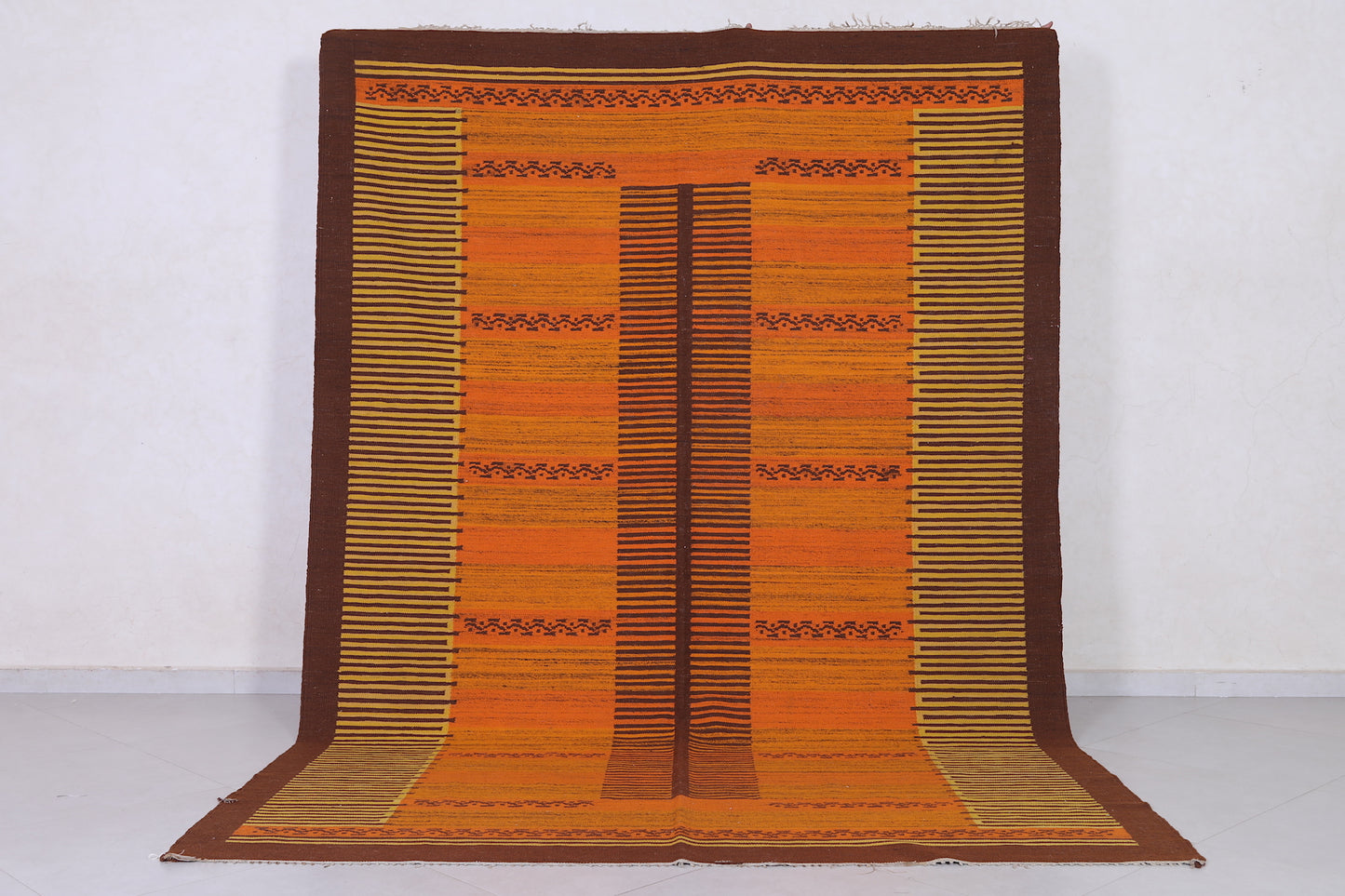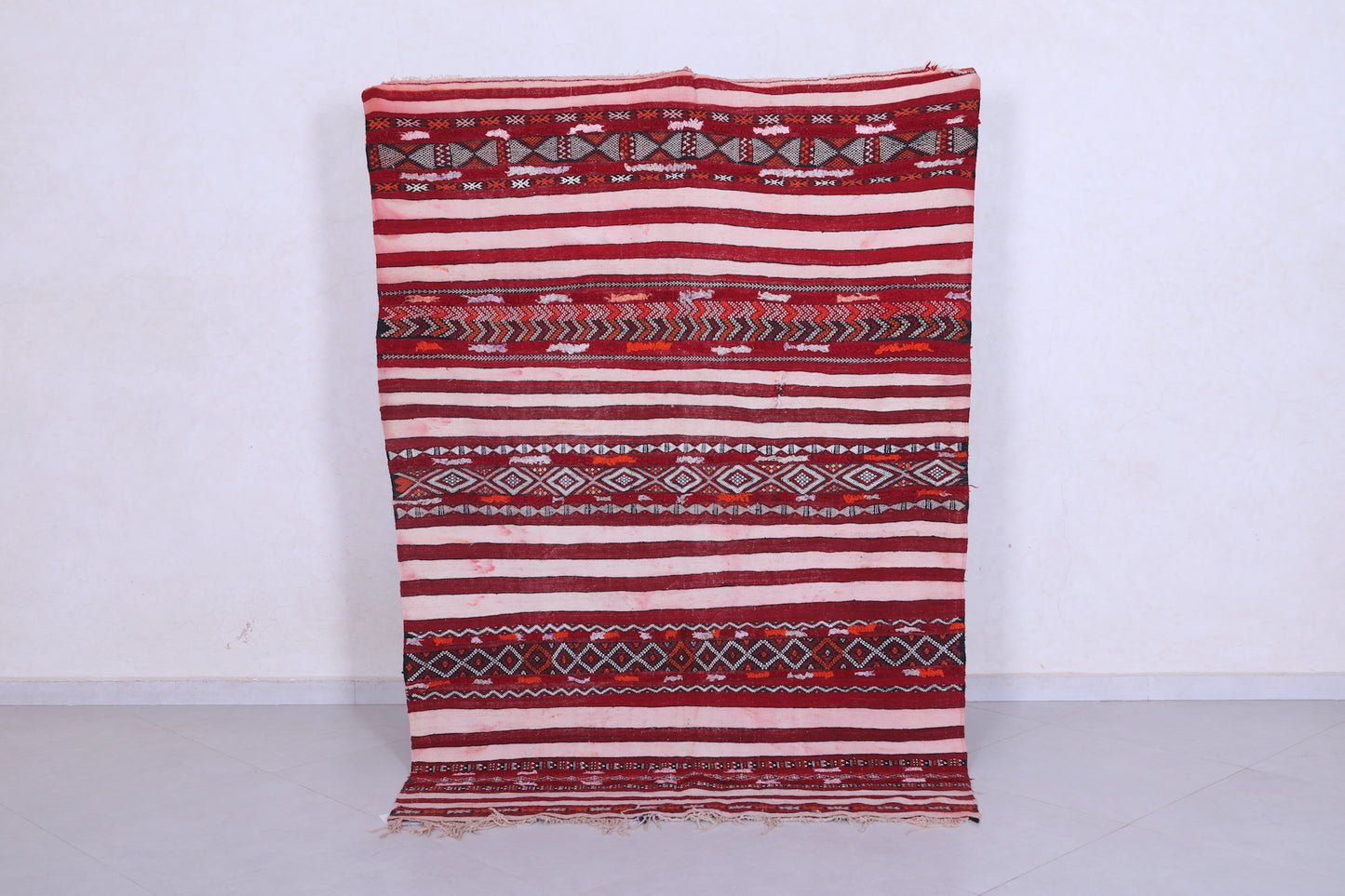
What Makes Kilim Rugs Special: Origin, Design and Charm
Have you ever questioned what makes kilim rugs so special? These colorful flat-woven rugs have been around for centuries, originating in international locations like Turkey, Iran, Afghanistan and Pakistan. Kilims are extra than simply decorative ground coverings – they constitute cultural background and artisanal craft. When you carry a kilim into your house, you’re inviting records and lifestyle to become part of your decor.
Unlike pile rugs, kilims are made with the aid of weaving coloured wool threads collectively without any knots. The give up end result is a flat, tapestry-like textile perfect for any room. Kilims are available in geometric tribal designs as well as floral and pictorial styles. Their simple but placing motifs will supply your area a bohemian vibe. If you’re looking to add warm temperature, texture and worldly appeal to your house, kilim rugs are an excellent preference. Once you go kilim, your space will in no way be the same.
The Origins and History of Kilim Rugs
Kilim rugs have a wealthy records and cultural history that make them unique. Originating in Central Asia, kilims date returned over 2,000 years. Nomadic tribes created these colorful, flat-woven rugs to beautify their tents and provide warm temperature.
The word ‘kilim’ comes from a Turkish word meaning ‘to unfold more or less.’ Unlike pile rugs, kilims are flat and the weft and warp threads are interlaced to create the pattern. This makes them light-weight, portable, and reversible.
Kilim designs are stimulated by using nature, tribal symbols, and cultural motifs. You'll see geometric shapes, animals, plant life, and symbolic medallions. The shades are generally colorful reds, blues, and yellows from herbal dyes like madder root, indigo, and saffron.

Cultural Charm
Kilims replicate the cultural background of nomadic tribes and village lifestyles. Their simple but putting styles represent fertility, life, and religious ideals. Kilims are extra than simply ornamental floor coverings - they provide a glimpse into the lives and values in their makers.
Owning a kilim rug lets in you to have a bit of this history and tradition in your home. Their ambitious yet rustic fashion works nicely in current, bohemian, and minimalist decor. Kilims make a announcement and talking point for any space.
Kilim rugs have endured for centuries due to their cultural significance, herbal fibers, and timeless splendor. If you're searching out a rug with person and memories to tell, select a kilim. Their wealthy origins and vibrant designs will brighten your own home for generations to come.
What Sets Kilim Rugs Apart: Material and Weaving Technique
Kilim rugs are specific for several motives. First, they’re product of wool, cotton, or silk, natural fibers that create intricate designs and a casual, comfortable feel. Kilims are flatwoven, which means the weft and distort threads are woven collectively at proper angles with out knots, ensuing in a skinny, light-weight rug perfect for layering.
The distinct kilim patterns are executed thru colour and the arrangement of threads, now not knots. Geometric shapes, symbolic motifs, and tribal designs are common, with each region generating its personal precise styles. The origins of these ancient symbols are misplaced to time however preserve to fascinate.
Kilims additionally frequently characteristic slit weave, an open location among sample bands, and kooky wefts where thicker yarns create raised strains across the rug. These characteristics provide kilims a country, hand made enchantment and make each piece absolutely particular.
While pile rugs provide cushioning, kilims are best for layering over carpets or wood flooring. Their durability and portability have made them famous for hundreds of years. Kilims can also be used as wall hangings, desk runners, pillows, and greater.
With a history spanning centuries, kilim rugs make a contribution a undying beauty and textural element to any home. Their enchanting patterns and natural fibers create areas that experience informal yet curated. For an authentic, one-of-a-type piece, recollect including a kilim for your decor. These rugs age superbly and emerge as softer and more captivating over the years.
Kilim rugs provide an irresistible combination of artistry, records, and hand made attraction that units them other than any other rug. Their versatile nature and bohemian spirit are certain to beautify your area for years yet to come.
The Distinctive Designs and Patterns of Kilim Rugs
The tricky designs and colorful patterns of kilim rugs are what definitely set them apart. The colorful geometric and botanical motifs are woven into the rug, as opposed to piled onto it like tufted carpets. This creates a flat, tightly woven floor with truly defined designs which have been passed down for generations.
Geometric Patterns
Many kilim rugs function popular geometric patterns like diamonds, hexagons, triangles, and crosses. These angular shapes are often organized in a repetitive pattern across the rug for a enthralling effect. The geometric designs are symbolic, representing harmony, fertility, and safety.
Botanical Motifs
Floral and plant patterns are also not unusual, with motifs just like the tree of life, leaves, roses, and tulips. The botanical symbols represent increase, renewal, and prosperity. These patterns may be woven in a border around the edge of the rug or scattered across the center.
Regional Influences
The particular designs, colors, and patterns in a kilim rug are motivated by using the area and tribe wherein it became made. For instance, rugs from the Konya location often function deep purple colorings and diamond grid patterns, whilst kilims from Istanbul comprise blue colors and naturalistic floral styles. Learning approximately the nearby patterns assist you to decide a rug’s starting place and choose a design you connect to.
Kilim rugs deliver lifestyles to any area with their vibrant colors and meaningful patterns that provide a window into any other lifestyle. The flatwoven rugs work nicely in excessive-site visitors regions on account that they're long lasting and lengthy-lasting. Their one-of-a-kind designs instantly create an inviting, eclectic appearance in your private home. For a rug that is decorative yet sensible, vibrant yet rooted in culture, select a lovely kilim.
How Kilim Rugs Can Enhance Your Home Decor
Kilim rugs can upload warm temperature, texture, and visible interest to any room in your property. Their vibrant colorings and geometric designs are positive to enhance your present decor.
Complement Your Style
Kilims are available lots of styles from bold and picture to tender and minimal. You can find one to fit any decorating style, from bohemian and eclectic to mid-century contemporary and rustic farmhouse. Their geometric motifs and tribal-inspired designs work well in each traditional and present day areas.
Bring Nature Inside
The natural wool fibers and plant-based totally dyes used in kilims create an organic, earthy feel. Adding a kilim rug is an easy way to deliver more herbal factors into your home. Their textured, nubby floor also provides warm temperature and coziness underfoot.
Unify a Space
Kilim rugs can assist tie a room together with their repetitive patterns and color palettes. Use a large vicinity rug to outline a seating location or entryway. Or layer a couple of smaller kilims for an eclectic look. Matching the colors and tones for your kilims to different ornamental accents, upholstery or wall colorations is a simple way to create a cohesive space.
Durability and Practicality
While visually placing, kilim rugs are also extraordinarily long lasting and sensible. The flatwoven creation is reversible, allowing both facets for use, and the wool fibers are clearly stain and dirt resistant. Kilims paintings properly in high-traffic regions of the home and maintain up properly to put on and tear over time at the same time as keeping their splendor. Their lightweight, flexible nature also makes them clean to move, fold and shop when wished.
Kilim rugs have so much to offer in enhancing your house's decor and ambiance. Their specific mixture of visual hobby, herbal warmth, and durability make them the precise practical accent for any room. Add a kilim rug to your space and revel in all of the charm it brings.
Caring for Your Kilim Rug: How to Keep It Looking New
To maintain your kilim rug looking its pleasant for years yet to come, proper care and maintenance are key. Kilim rugs are durable, but still require a few TLC. Follow those suggestions to take care of your kilim rug and hold its splendor and cost.
Vacuum Regularly
Vacuum your kilim rug once every week or extra often in high-traffic regions. Use the right top placing for rugs and avoid the beater bar, that can harm the rug's fibers. Vacuuming will cast off dust and particles which can dull the colors and put on out the rug quicker.
Avoid Direct Sunlight
While kilim rugs are diminished to gain their rustic look, direct daylight can similarly fade the colors and purpose damage. Place your kilim rug out of direct sunlight whilst possible. Use curtains to dam daylight at some point of the brightest elements of the day.
Protect from Moisture
Kilim rugs should now not be located in regions that get very moist, including lavatories. Excessive moisture can cause warping, mould increase, and damage to the dyes. Place protecting pads under furnishings to save you indentations and scratches.
Professional Cleaning
For a deeper smooth, have your kilim rug professionally cleaned as soon as every few years based on the rug's age and condition. Look for a reputable rug cleansing service that makes a speciality of Oriental or tribal rugs. Avoid device washing, as it may harm the rug. Professional cleaning will revitalize your rug's colors and condition the fibers.
Repairs
For any tears, holes, or unraveling edges for your kilim rug, have a expert rug repair service mend and rebind the rug. Do now not glue or tape damaged regions your self, as this creates a susceptible factor a good way to continue to break down through the years. Professional rug restore and rebinding will preserve your kilim rug's beauty and price.
By following these easy care suggestions, your kilim rug will stay vibrant and final for decades. With its rich history and craftsmanship, a kilim rug is supposed to be loved and handed down thru generations. Keeping it well cared for is the first-class way to hold this handcrafted heirloom.
Conclusion
So, there you have it - a glimpse into the origins, intricate designs, and particular allure of kilim rugs. While kilims may be an antique art shape, they nevertheless have an area in modern homes and decor. With their ambitious patterns, wealthy records, and casual vibe, kilim rugs can infuse warmth and person into any area. Next time you're looking for an area rug, take into account a kilim. You'll be assisting traditional craftsmanship and bringing a one-of-a-kind piece into your private home that tells a story. Kilim rugs - functional works of art that stand the check of time. What's not to love?



